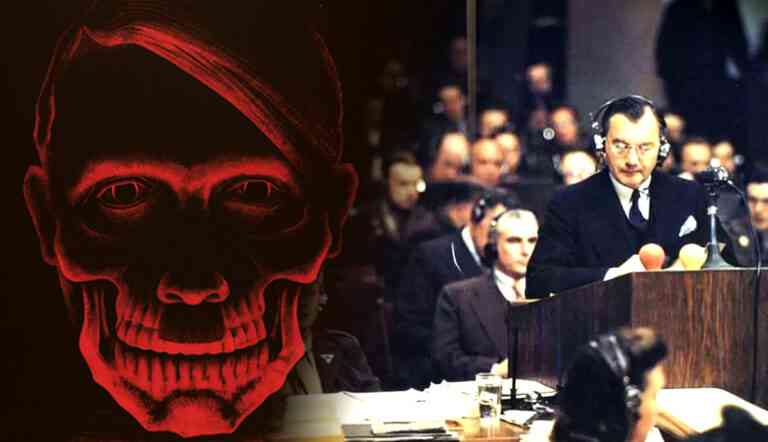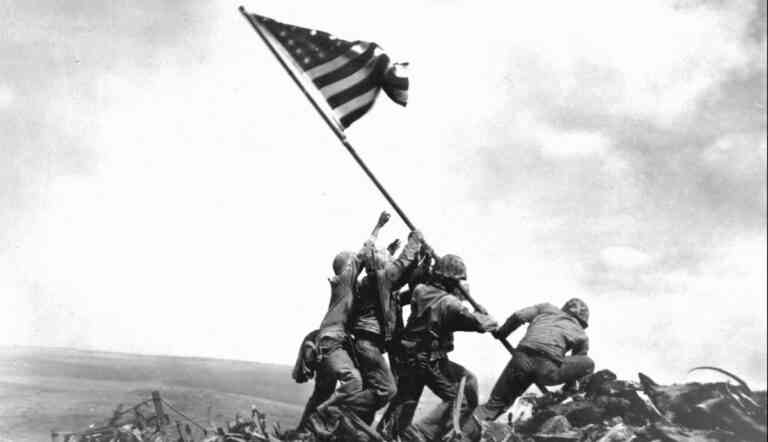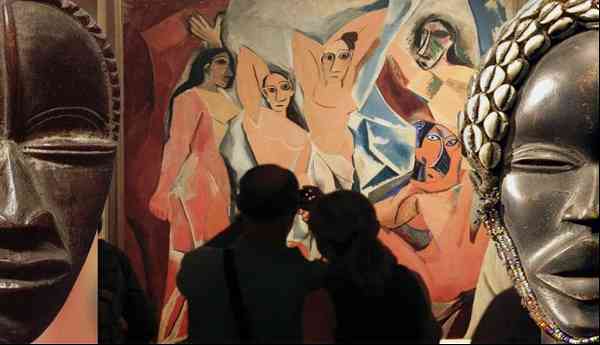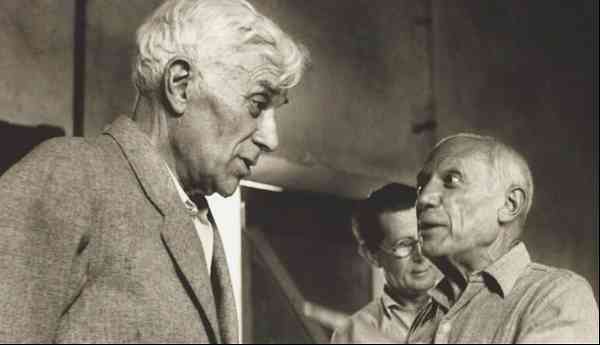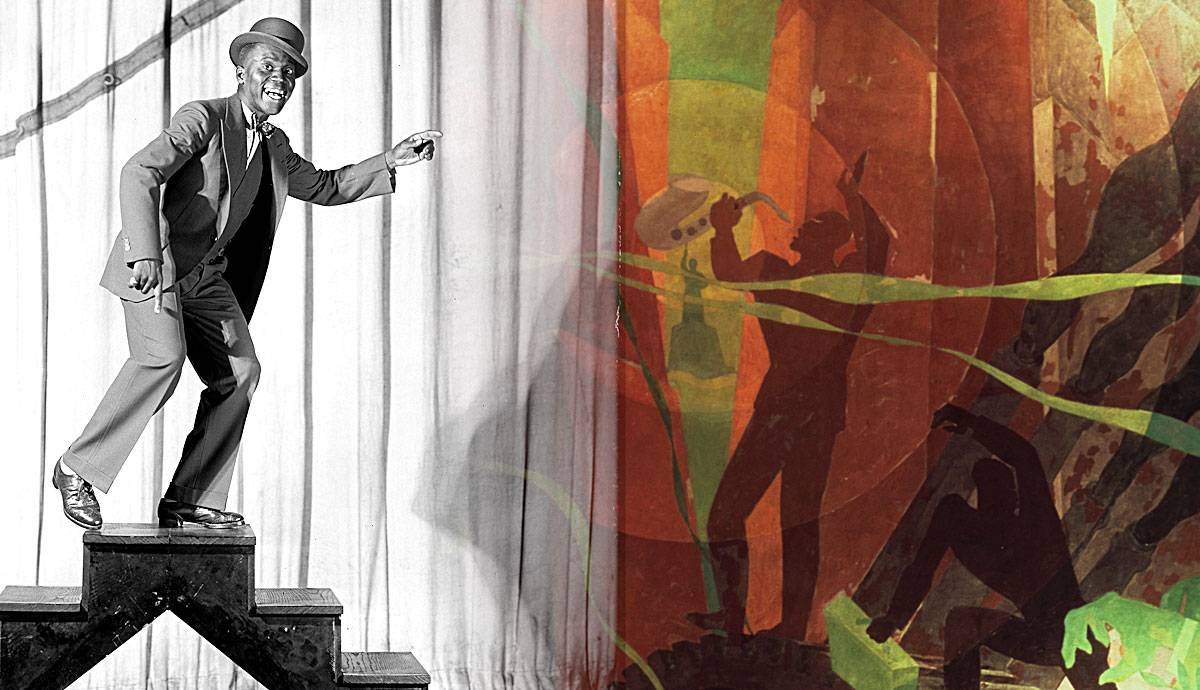
The Harlem Renaissance was a Black cultural movement between the two world wars. However, its impact on African American culture is long-lasting, and even today, the scholars and artists at the center of the movement are integral to the culture of Black Americans. Many key players in this movement were the visual and performing artists who came onto the scene. In a concrete visual medium, these artists reclaimed their culture and presented it in a more fastidious light, “uplifting” the role of African Americans in art. Whether through sculpture, painting, or performance, these artists upended how the Black American was portrayed in art. Here are six artists who helped define the cultural shift that was the Harlem Renaissance.
1. Aaron Douglas

Aaron Douglas was born in Topeka, Kansas, in 1899. Following high school, he earned a Bachelor of Fine Arts from the University of Nebraska, Lincoln. He then taught as a high school art teacher for two years. Douglas was aware of and kept up with the growing Black cultural movement in Harlem, reading magazines published by the National Association for the Advancement of Colored People (NAACP) and the National Urban League. He was recruited by influential leaders of the Harlem Renaissance, including the editors of the aforementioned groups, W.E.B Du Bois and Charles S. Johnson, as they had heard of his talent for painting and were eager to have more Black artists for the movement in New York.

Douglas moved to New York in 1925 and soon began studying under German artist Fritz Winold Reiss with the support of Johnson and Du Bois. Soon after, in 1927, Du Bois hired Douglas as the staff art critic for the NAACP’s publication, The Crisis. It was in the same year that James Weldon Johnson, a poet, asked Douglas to illustrate his book of poetry entitled God’s Trombones: Seven Negro Sermons in Verse. While the collection itself was Johnson’s masterpiece, so, too, were Douglas’s illustrations. His style, in which he mixed African art with Cubism and Art Deco, became the defining style of the Harlem Renaissance and influenced his later paintings and murals.
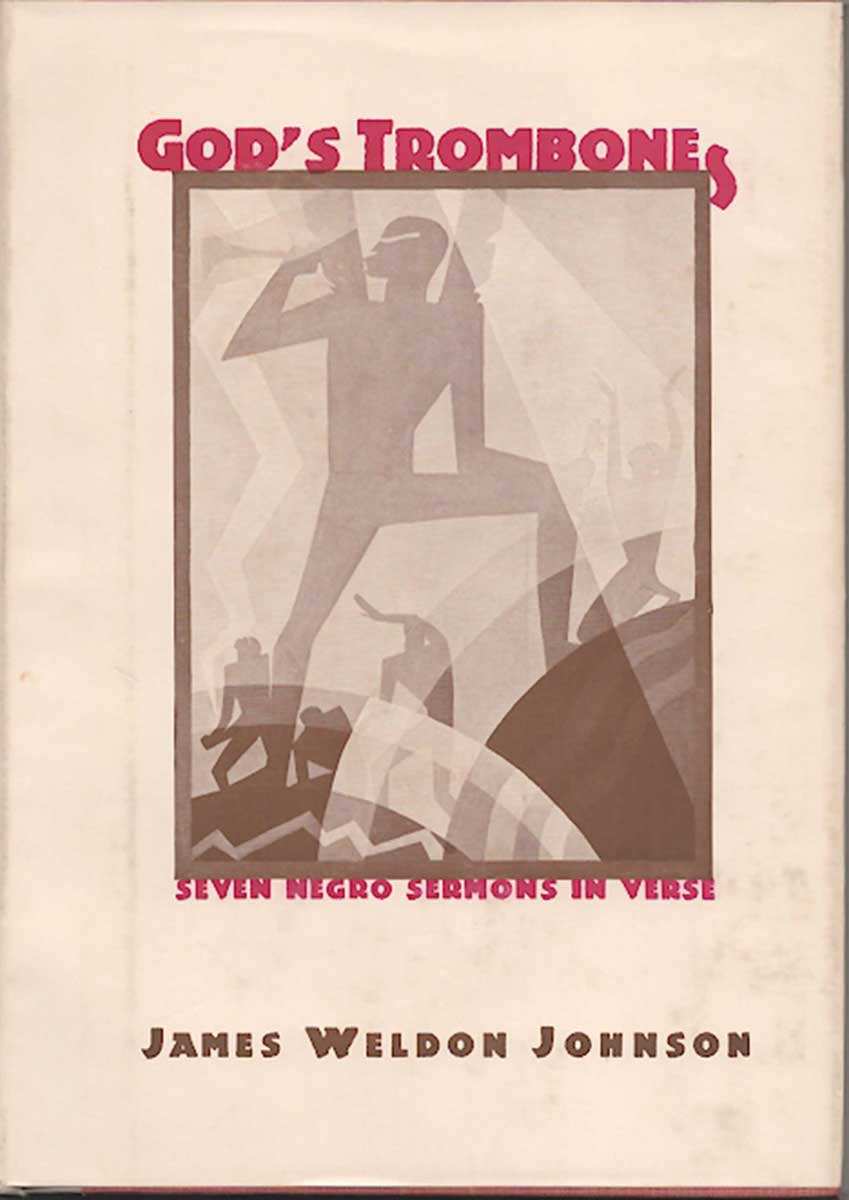
Get the latest articles delivered to your inbox
Sign up to our Free Weekly NewsletterDouglas was commissioned for several murals throughout his career. In 1934, the Works Progress Administration hired him to paint a mural on the New York Public Library’s 135th street branch. The four-panel mural was entitled Aspects of Negro Life and depicted painted figures representing the Black experience. One figure symbolized escaped enslavement, one symbolized economic hardship, and one played the saxophone, representing the new world of opportunity for African Americans from the art, music, and scholarship of the Harlem Renaissance.
Douglas later moved to Nashville and worked as an art professor at Fisk University until he died in 1979. Today, his art lives forever in synonymy with the Harlem Renaissance.
2. Augusta Savage
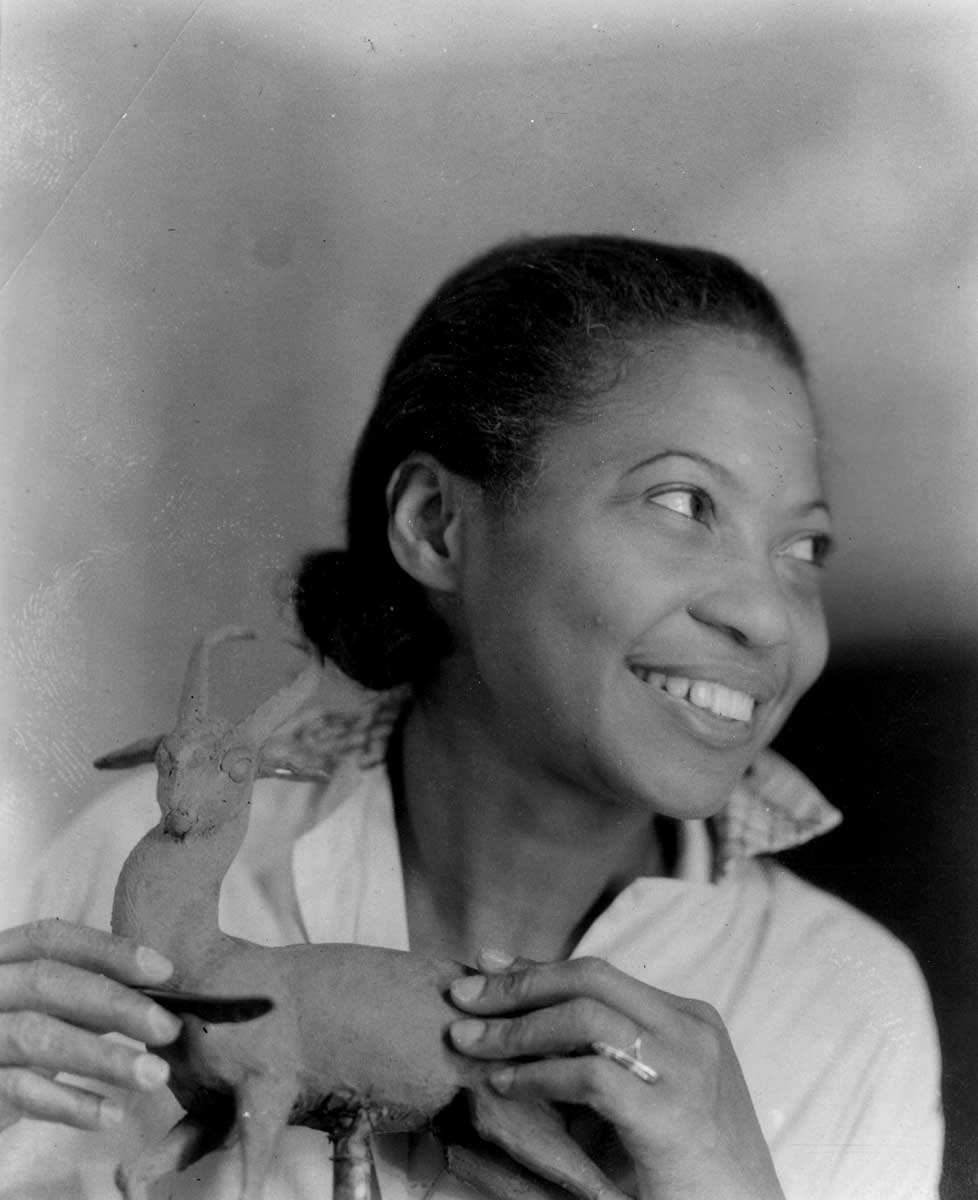
Augusta Christine Fells (later Savage) was born near Jacksonville, Florida, in 1892. From a very young age, she was determined to become a sculptor. She often made figures out of the red clay that surrounded her home and was encouraged in high school to continue her practice. She moved to New York in 1921, where she attended Cooper Union and studied under sculptor George Brewster.
Savage’s first commission was from the New York Public Library on 135th street. They asked her to sculpt a portrait bust of W.E.B. Du Bois, and after she successfully finished her work, many more commissions poured in. Savage was renowned for her style, which depicted African Americans in a more human and neutral light as opposed to the stereotypical images of Black people at the time.

This realistic and positive representation of African American subjects was a hallmark of Savage’s work and the Harlem Renaissance. She was a staunch critic of the fetishization of the “negro primitive” image, and her work reflected the beauty and elegance of Black features.
Savage began teaching art in Harlem in 1932 when she founded the Savage Studio of Arts and Crafts and later became the first director of Harlem’s Community Arts Center. Her impact on the Harlem Renaissance was profound, as she encouraged her students and the general public, through her work, to learn about African American culture. She embodied the cultural ideal of the Harlem Renaissance in that she encouraged a new view of Black culture devoid of the caricatures that had been made of it in the past.
3. Bill “Bojangles” Robinson
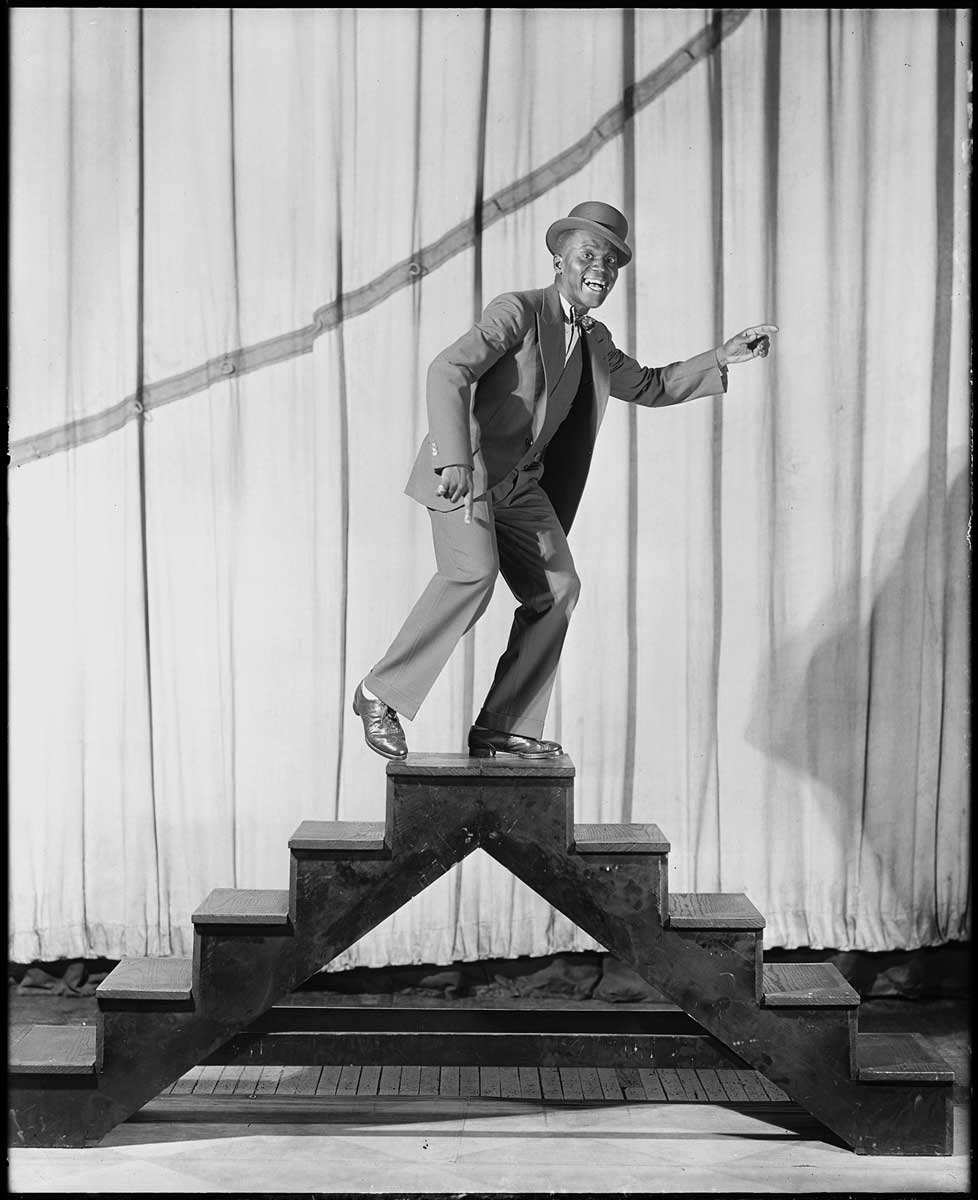
Born in Virginia in 1878, Bill Robinson began dancing in saloons at six and performed on a vaudeville circuit two years later. He received the nickname “Bojangles” during this time, which he kept for all his life, even though he was unsure of its origin or meaning. Robinson met his lifelong manager, Marty Forkins, in 1905. Forkins gave Robinson the opportunity to tour as a solo dancer at a time when African American dancers appeared almost exclusively as pairs.
By 1928, Robinson moved to Harlem, where he starred in the all-Black revue Blackbirds of 1928. Produced for white audiences by a white producer, this show made Robinson’s popularity soar. He encapsulated the ideology of the Harlem Renaissance in his ability to subvert preconceived notions of African American culture through dance. While much of Black tap dance until that point was frantic and heavy, Robinson’s tap was precise and graceful. He danced on the tips of his toes with elegance and finesse and, in doing so, turned the idea that Black dance must look a certain way on its head.
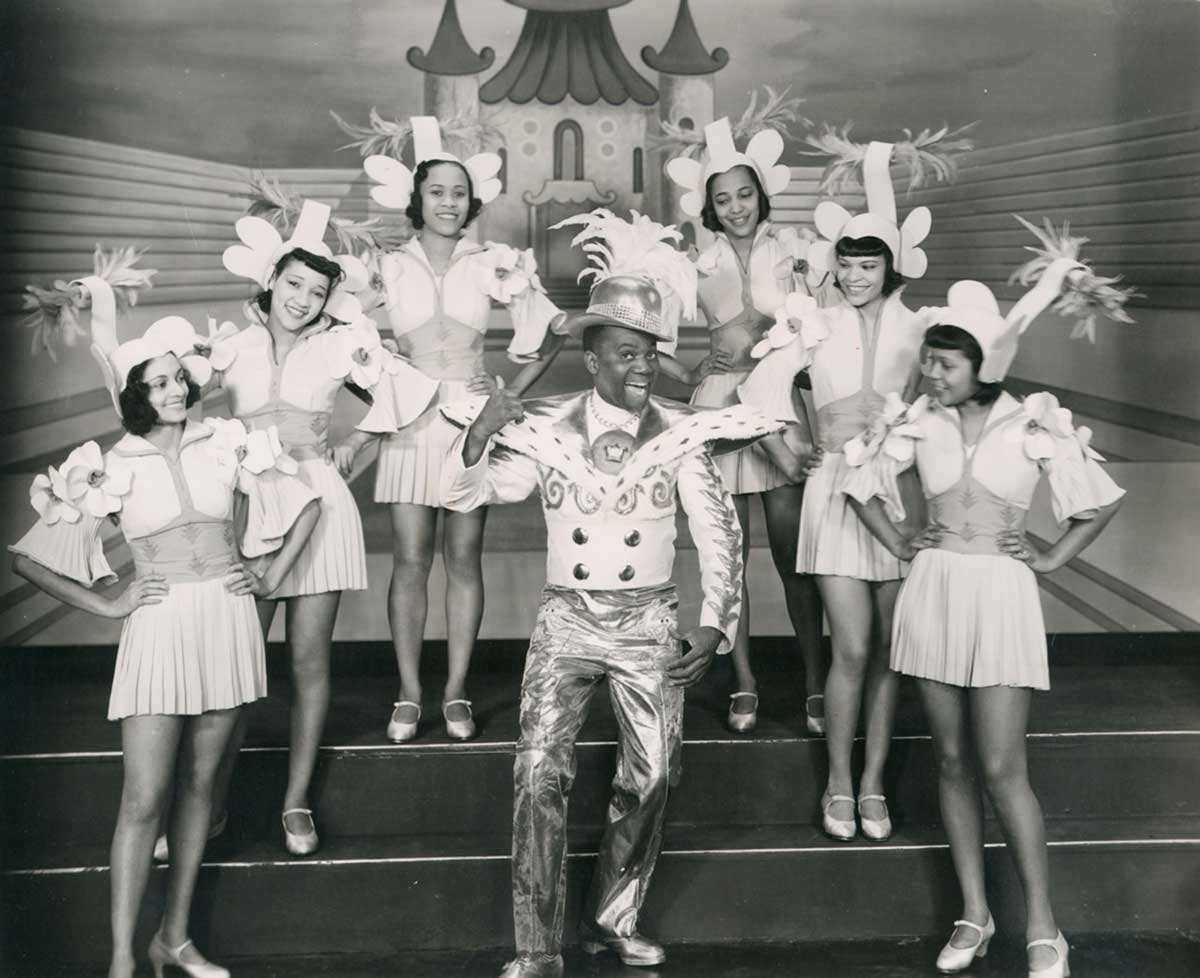
He defied the stereotypes of the time and helped to solidify dance as a principal art form of the Harlem Renaissance; Robinson was also unpopular with many of his contemporaries. His fame soared because of roles where he portrayed the racist stereotypes the movement aimed to break away from. While he also starred in productions more characteristic of the reality of Black culture, he never garnered as much success from them. Robinson was seemingly a token figure for the white establishment of the time. He was named the Honorary Mayor of Harlem and the mascot of the New York Giants, which many African American leaders perceived as demeaning.
Robinson’s career was controversial, but he embodied the Harlem Renaissance in his ability to break through the mold that the Black artist had been given at that point in time. His breakthrough success, despite the racism of the time, was a massive achievement and cemented his legendary status in the artistic culture of the Harlem Renaissance.
4. Evelyn Preer
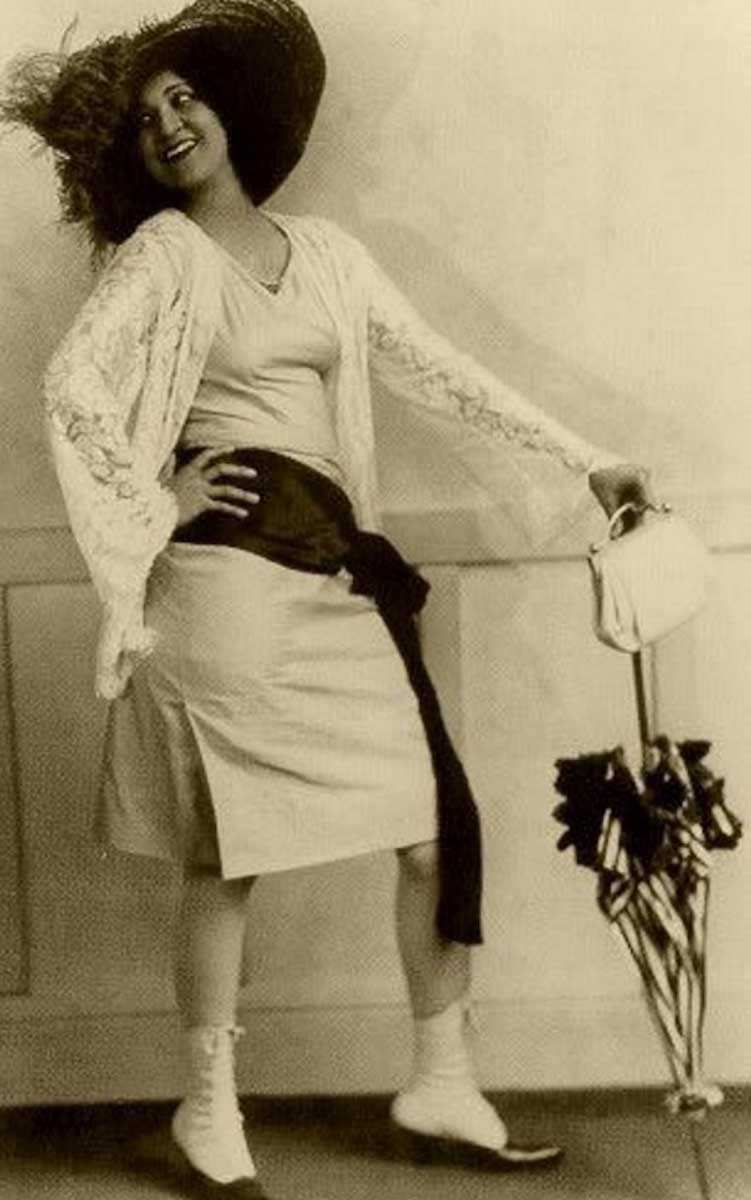
Evelyn Preer was born in 1896 in Vicksburg, Mississippi. She soon moved to Chicago, where she attended grammar and high school and began performing with her mother in vaudeville and street preaching acts. These performances kick-started Preer’s career in acting, which would span the rest of her life.
In 1919, Preer was cast in Black filmmaker Oscar Micheaux’s first film, Homesteader. Micheaux promoted Preer as his leading actress; she went on publicity campaigns and made personal appearances after her success in her first role. She was, ostensibly, one of the first African American women to become a star in her community. Her success was only heightened by her leading role in Within Our Gates, a 1920 film by Micheaux in which Preer’s character, Sylvia Landry, survives an attempted assault by a white man. This film was considered controversial, as the underlying message was a harsh critique of racial relations in America at the time.
This social commentary through film began to be a trademark of Preer’s performances, as she was known to turn down roles that she felt demeaned the image of African Americans. She found support in this ideology through her membership in an acting troupe, The Lafayette Players, which toured the country and performed plays that had never before been done with an all-Black cast and production team. In protest of theatrical segregation in the Jim Crow South, the Lafayette Players brought legitimate theater to Black audiences. In the North, vaudeville was waning in popularity, and Preer’s troupe brought exciting performances back to spaces where such things were fading into the background.
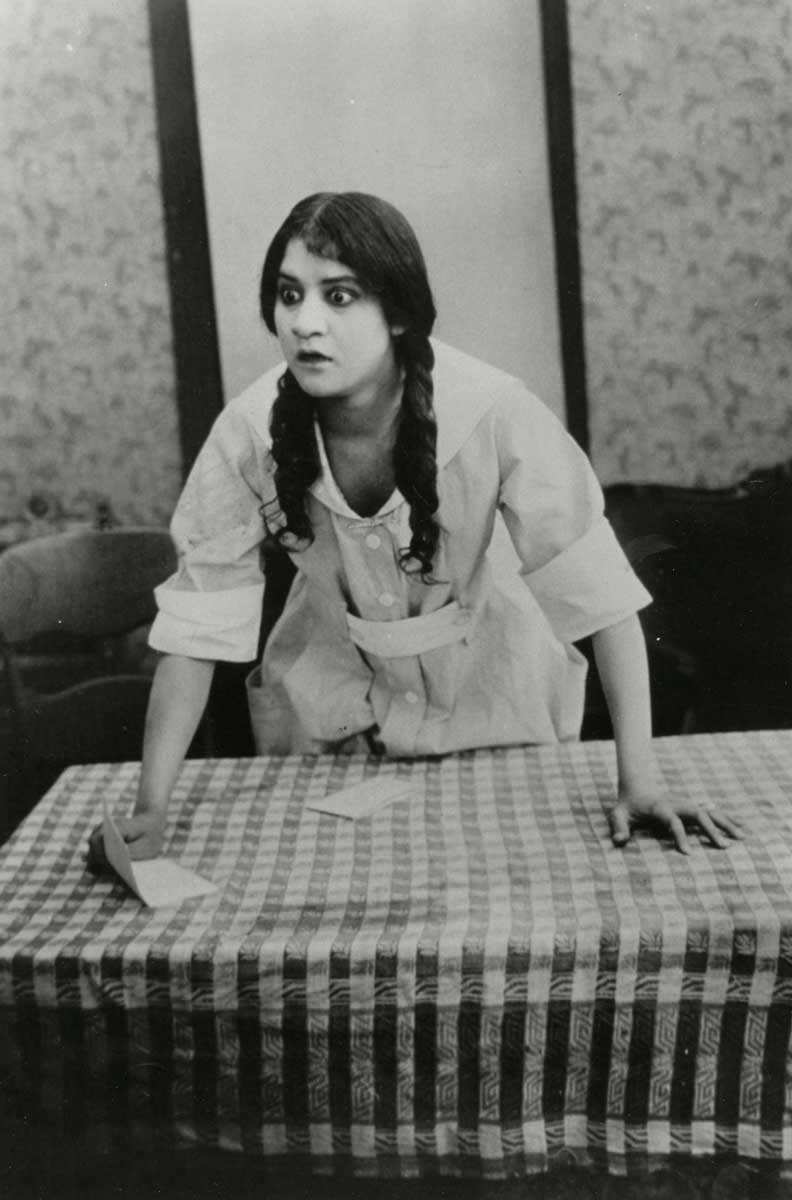
Preer embodied the ideology of the Harlem Renaissance through her courage and conviction in bucking the traditional roles given to Black women and still skyrocketing to fame. She was often called the best actress of her time, and she did it so that she never had to lower herself to give outstanding performances to audiences. She played roles and performed in shows that had never before seen a Black actor, much less an entire troupe. Preer’s fame captured the heart of the Harlem Renaissance, that Black culture and excellence could be widely loved and appreciated by all.
Evelyn Preer died in 1932, months after giving birth to her first child. She was 36 years old. Preer starred in 19 movies within her short lifetime, and she was lauded as a pioneer for Black representation in film, which cemented her as a fixture of the Harlem Renaissance for years to come.
5. Jacob Lawrence

Jacob Lawrence, a native of New Jersey, was raised in Harlem from age 13. He was born in 1917 and thus was raised in the culture of the Harlem Renaissance and the Great Migration. His parents, like hundreds of thousands of other Black southerners, had moved North for better access to education and work. Lawrence took advantage of the neighborhood he was raised in and began painting to reflect the experiences of the people who had regaled him with vivid, colorful, and heart-wrenching stories for the entirety of his life.

Lawrence enrolled in art classes in the 1930s. By the age of 23, he had produced his first five narrative paintings, capturing the lives of Black leaders, from Frederick Douglass to Harriet Tubman. He painted to reflect Harlem, to show the world the culture he loved. His style combined rigid and geometrical shapes with fanciful colors and patterns, which helped him funnel his message directly to the viewer.
Lawrence’s work was inspired by the Great Migration, combined with songs, Bible stories, and sermons he had heard as a child. His paintings were part expressions, part educational tools that served in their essence to share the culture of the Harlem Renaissance with the world. Lawrence broke barriers as an artist, as he visually depicted the movement of Black freedom and expression.
He was the first Black artist to have pieces acquired by the Museum of Modern Art (MoMA) in New York. His goal in sharing his culture was to fit his heritage into the greater story of American heritage as a whole. Lawrence is quoted as saying, “I do not look upon the story of the Blacks in America as a separate experience to the American culture but as a part of the American heritage and experience as a whole.” His art expressed the Harlem Renaissance by defying the stereotypical understanding of Black culture and fitting it into the country’s history.
Lawrence died at 82 in 2000 from lung cancer. His legacy is the decades of exhibitions and awards his work received and his paving the way for the posterity of Black artists to experience success on a never before seen scale.
6. Paul Robeson
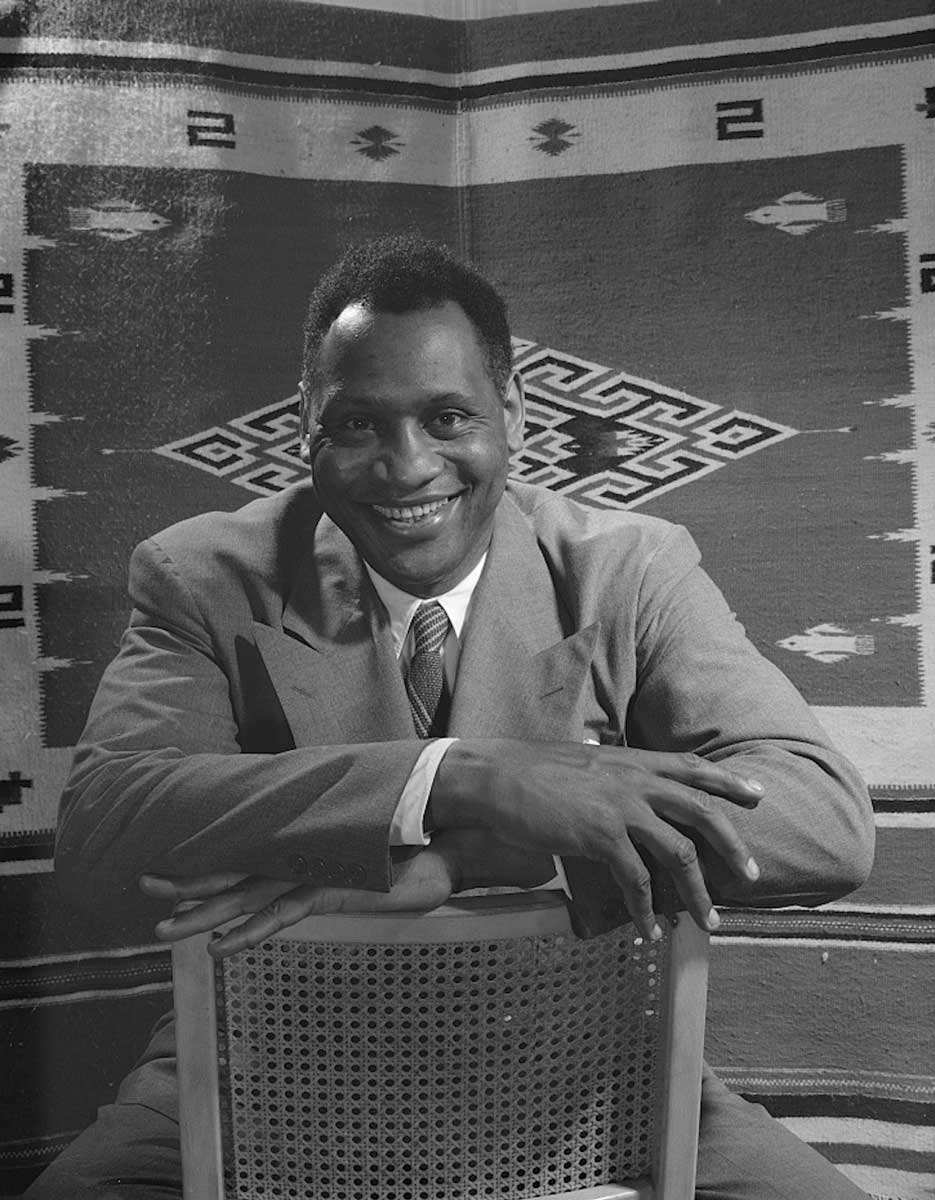
Paul Robeson was born in Princeton, New Jersey, in 1898. He was the son of a formerly enslaved father, who had earned a degree from Lincoln University, and made an effort to instill social awareness in Robeson. Robeson went to Rutgers University, only the third African American student to do so, played for the football team, and graduated as valedictorian. He then earned a law degree from Columbia University in 1923.
Robeson practiced law full-time in New York City, occasionally acting in performances at the local YMCA. However, after the rampant racism he experienced in his job as a lawyer, he decided to pursue acting full-time. He began performing in theater and film roles, wherein he garnered roles that had previously been off-limits for Black actors. He continued to star in traditionally white roles, such as the title role in Othello and Joe in Showboat, which provided the example for the singing of “Ol’ Man River” for the rest of the show’s productions. His role in All God’s Chillun Got Wings (1924) took a particularly controversial turn, as it portrayed a relationship between a Black man and a white woman.
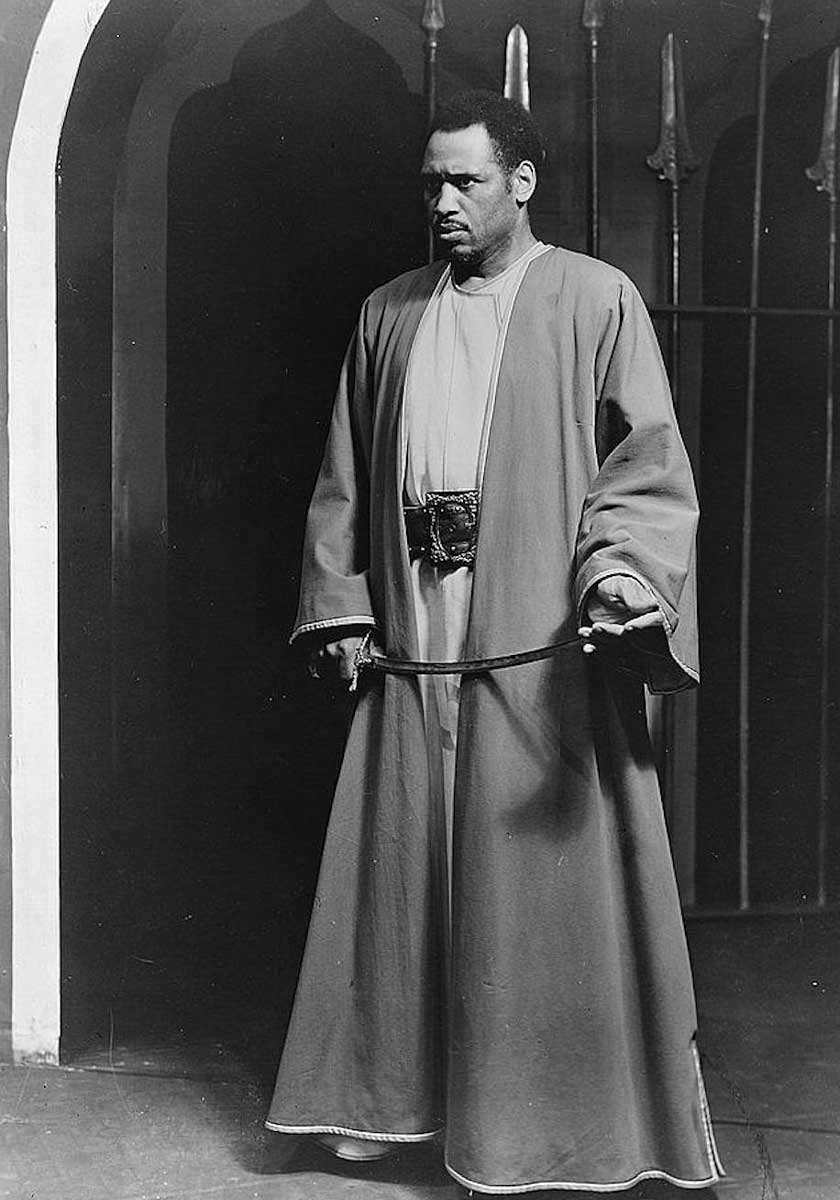
Paul Robeson represented breaking the norms of the time, a key trait in many Harlem Renaissance leaders. Robeson believed that American culture was incomplete without adding African American culture. He broke barriers for other Black actors and performers and is considered one of the greatest actors of the 20th century. He also broke barriers in sports by playing for two teams in the National Football League while earning his law degree. He was artistically lauded worldwide and used this fame to speak against fascism, racism, and colonialism. While this was detrimental to his career at times (he was blacklisted during the Mccarthy Red Scare era), he fought for the things he believed in alongside activists like W.E.B. Du Bois.
Robeson is still a symbol of the Harlem Renaissance because his fame transcended stereotypes of his race. He brought his culture to the masses, and he produced world-class performances. His list of accomplishments, including a Hollywood Walk of Fame star, a Grammy for Lifetime Achievement, and membership in the American Theater Hall of Fame, speak to the success he garnered despite the prejudices of the time. He faced the perils of being a Black performer head-on and thus paved the way for Black actors after him to flourish in their careers. Robeson died in 1979 after a series of strokes and was laid to rest in New York City.

